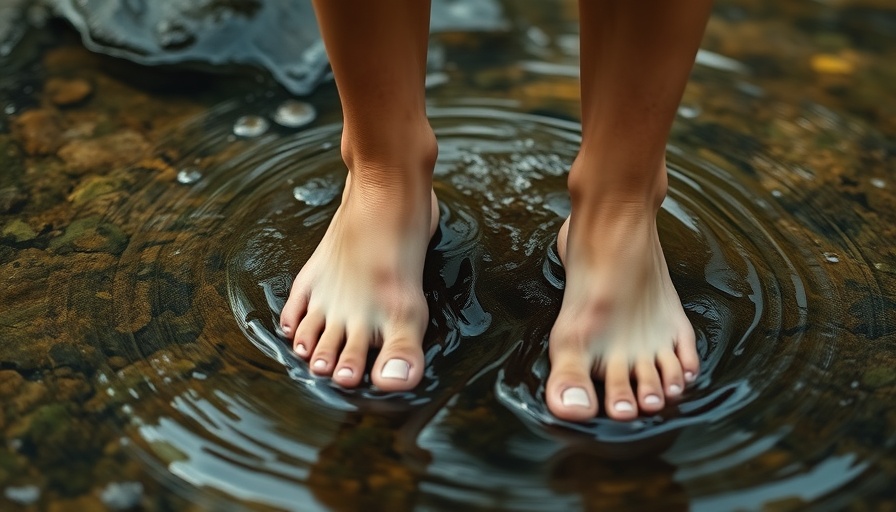
Your Feet: The Forgotten Tellers of Our Health
In today's fast-paced lifestyle, we often neglect an essential part of our anatomy: our feet. These multitasking marvels withstand daily wear and tear, yet they remain underappreciated. Ancient cultures regarded feet as vital indicators of health and emotion, viewing them as maps of our overall well-being. It’s time we tap into this ancient wisdom and rediscover the deep connection between our feet and health.
The Science Behind Foot Sensitivity: Listen to Your Body
Feet are much more than tools for movement; they serve as critical highways for health information. Traditional healing systems, such as those in Chinese medicine, recognize the importance of the meridian points on the soles that correspond with various internal organs. Similarly, Ayurvedic practices treat feet as sacred, positioning them as conduits for grounding energy. In reflexology, our entire body is mirrored on our feet, suggesting that each area reflects specific physical and emotional functions.
Being attuned to foot signals can offer insights into our systemic health. Conditions like persistent dryness or cold toes might suggest systemic issues, such as poor circulation or heightened stress levels. Often, our feet will communicate these problems before they escalate into severe health concerns.
Addressing Minor Foot Issues: A Reflective Journey
Unattended foot problems such as verrucas can reveal deeper health insights, reflecting immune system strength and skin resilience. Observing these symptoms is not simply about discomfort; they provide valuable lessons about our bodies' coping mechanisms for pressure and recovery. Treating these issues should not only focus on external appearances but also recognize the underlying messages being conveyed.
Blending Tradition with Modern Medicine: The Path Forward
While traditional foot care is vital, modern concerns require adapting those practices. For instance, while herbal remedies can offer some relief for conditions like verrucas, advances in medicine, such as cryotherapy, are often more effective for lasting results. A balanced approach combines preventive measures—staying mindful of hygiene and wearing proper footwear—with modern medical treatments when necessary. It’s about viewing our feet as part of a holistic health journey rather than isolated issues.
Simple Rituals for Foot Care: Tune Into Your Body
Incorporating foot care into your daily routine doesn’t have to be complicated. Consider rituals like Epsom salt baths to relieve tension, or take a few moments for self-massage to improve circulation. Reflexology charts can serve as useful tools for guided pressure work on specific foot points, enhancing physical and emotional well-being.
Moreover, reconnecting with nature by walking barefoot on grass or sand can support better balance. While the research on these benefits is still emerging, the instinct to use natural elements for foot care is undoubtedly age-old and merits exploration.
Understanding the Bigger Picture: The Importance of Foot Hygiene
Consistency is key in foot care. Small habits like ensuring your feet are completely dry, choosing breathable, supportive footwear, and being observant of changes in skin texture or sensation can prevent common foot issues from developing. Each step we take is a reminder of where we’ve been and where we are heading; honoring our feet is a way to show appreciation for the journey of our bodies.
Bridging the Ancient with the Contemporary: A Call to Action
As we navigate our busy lives, integrating simple awareness and foot care practices can lead to profound health benefits. Ultimately, taking time to connect with our feet may prove essential in maintaining overall well-being. Join the growing movement toward better foot health and listen to what your feet are really trying to tell you!
 Add Row
Add Row  Add
Add 



Write A Comment